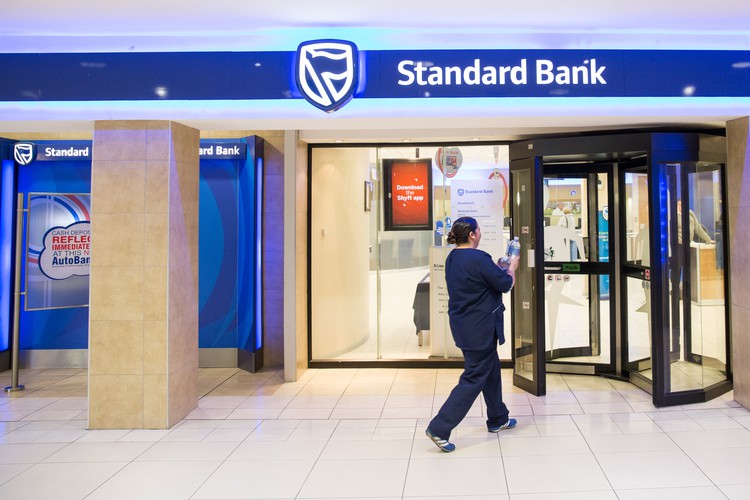
Imagine this scenario: you’re peacefully sleeping in your cozy bed when suddenly, the lights go out. A power outage. Panic sets in, but amidst your initial worries, you start to wonder – what happens to your smart home security system during situations like these? Will it still be able to keep you and your loved ones safe?
The unsettling truth is, a power outage is exactly the wrong time for your security system to stop working. Blackouts are no secret; everyone will know the power is out, and homeowners may have evacuated. This creates a prime opportunity for criminals, who may seize the chance to break into affected homes. Keeping your security system up and running is therefore one important way to burglar-proof your home.
In this comprehensive guide, we will explore the fascinating world of home security systems and unravel the mysteries of their performance during power outages. We’ll identify the common pitfalls that can leave your home exposed and examine how different systems respond when the electricity goes dark. So, grab a cup of coffee, sit back, and let’s unravel the truth together, ensuring you’re equipped to make informed decisions about your home’s safety.
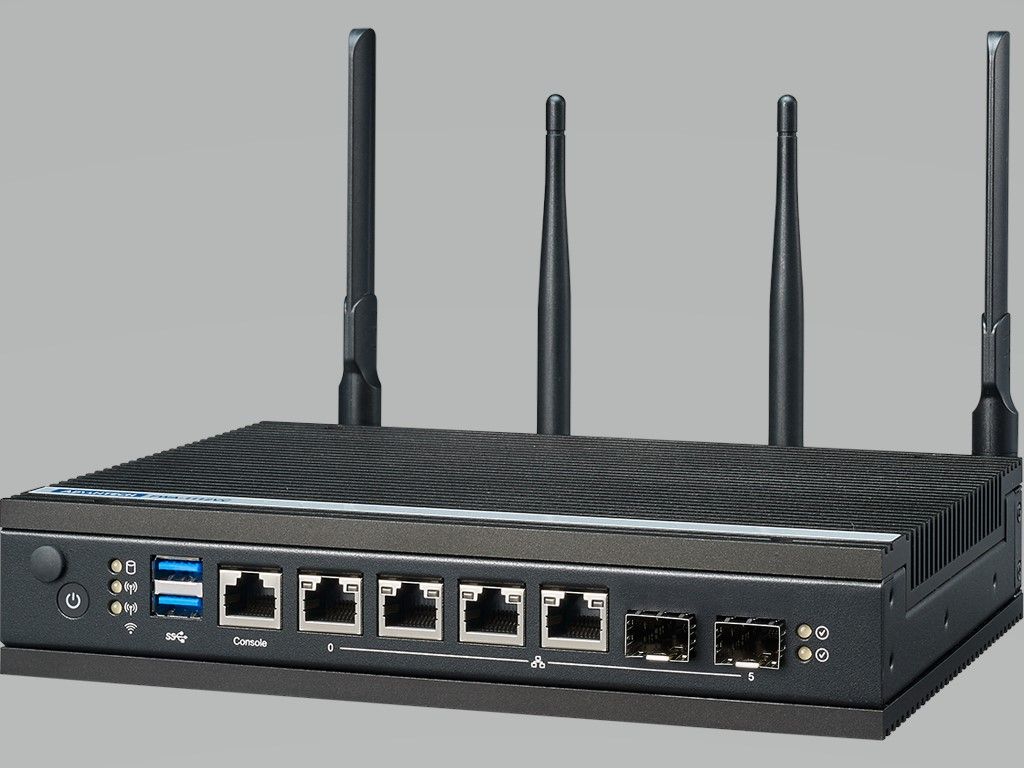
1. **The Wi-Fi Only Trap: Systems Reliant Solely on Wi-Fi**Many modern home security systems, including popular brands like Arlo, Ring, and SimpliSafe, primarily run on Wi-Fi. They leverage your home’s wireless network to send crucial messages, such as “Hey, that door is open!” or “We’re set to away mode now!” directly to your mobile device or a monitoring center. This reliance on Wi-Fi creates a significant vulnerability during a power outage.
When the power blinks out, so does your Wi-Fi router. Without electricity, your router ceases to function, effectively cutting off your security system’s communication lifeline. Your devices can no longer talk to each other, nor can they transmit alerts or information externally. This leaves your smart home security system effectively isolated and unable to perform its core protective functions.
This immediate loss of communication is a critical concern for any homeowner. If your system depends exclusively on a Wi-Fi connection, a power outage directly limits its ability to communicate. While it’s harder for a burglar to cut off this connection from outside the house, the vulnerability lies with the ubiquitous nature of power disruptions. For most of us, the problem won’t be our home security devices per se, but rather our Wi-Fi router going offline.
Therefore, understanding that your Wi-Fi connection is a single point of failure during a blackout is paramount. If you’ve ever plugged in your Wi-Fi password to set up your security system, you need to consider what happens when that Wi-Fi disappears. Without a backup communication method, your advanced wireless security system becomes just a collection of inert devices when the lights go out.
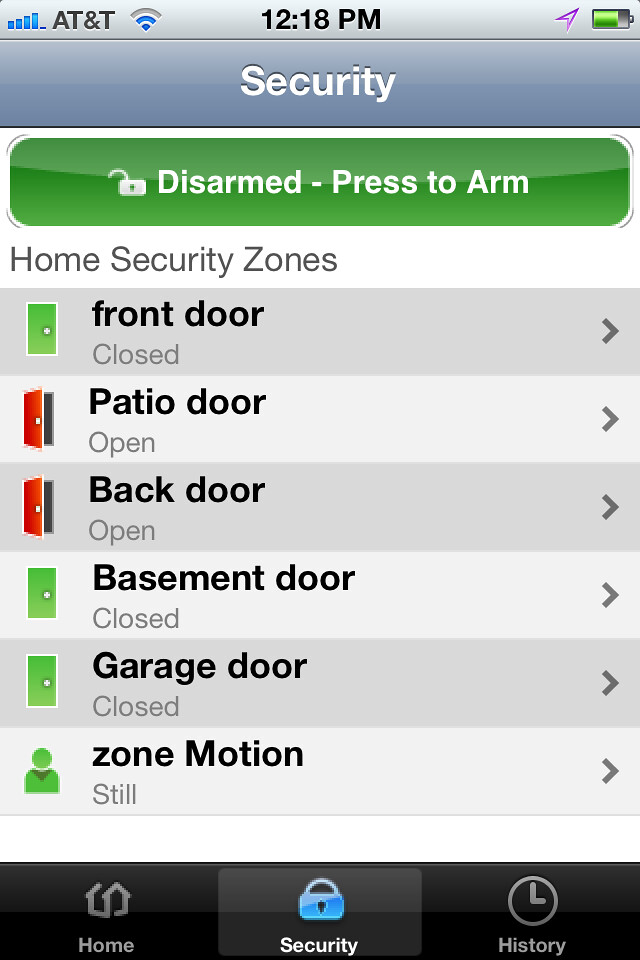
2. **Battery Backup Misconceptions: The Limited Lifespan of Device-Level Batteries**It’s reassuring to know that many home security devices come with batteries, either as their main power source or as a backup. This feature is often touted as a solution to power outages, ensuring that your system remains operational for some time. However, there’s a crucial catch: these battery backups are rarely a long-term solution and often fall short when truly needed.
The duration these batteries can sustain your system varies significantly by device. For instance, a Vivint Sky Control keypad might last anywhere from four to 24 hours on its backup battery, while an Arlo Keypad offers about 12 hours of power. While this sounds like a decent window, it’s important to remember that the average power outage in the U.S. now lasts more than seven hours, and this number may be on the rise due thanks to climate change.
This disparity between battery life and outage duration means that your alarm backup battery, though initially helpful, may struggle to make it through the entire outage. If your power remains off for an extended period, which is increasingly common, your devices will eventually run out of juice. This leaves you without protection for at least some, if not much, of the time.
Furthermore, the effectiveness of these backup batteries can degrade over time. If you’ve had your home security system for a long time and haven’t changed the batteries in years, their actual lifespan during an outage could be far less than their advertised capacity. Regular maintenance is essential, as backup batteries should ideally be checked and replaced every two to three years to ensure their reliability when you need them most.
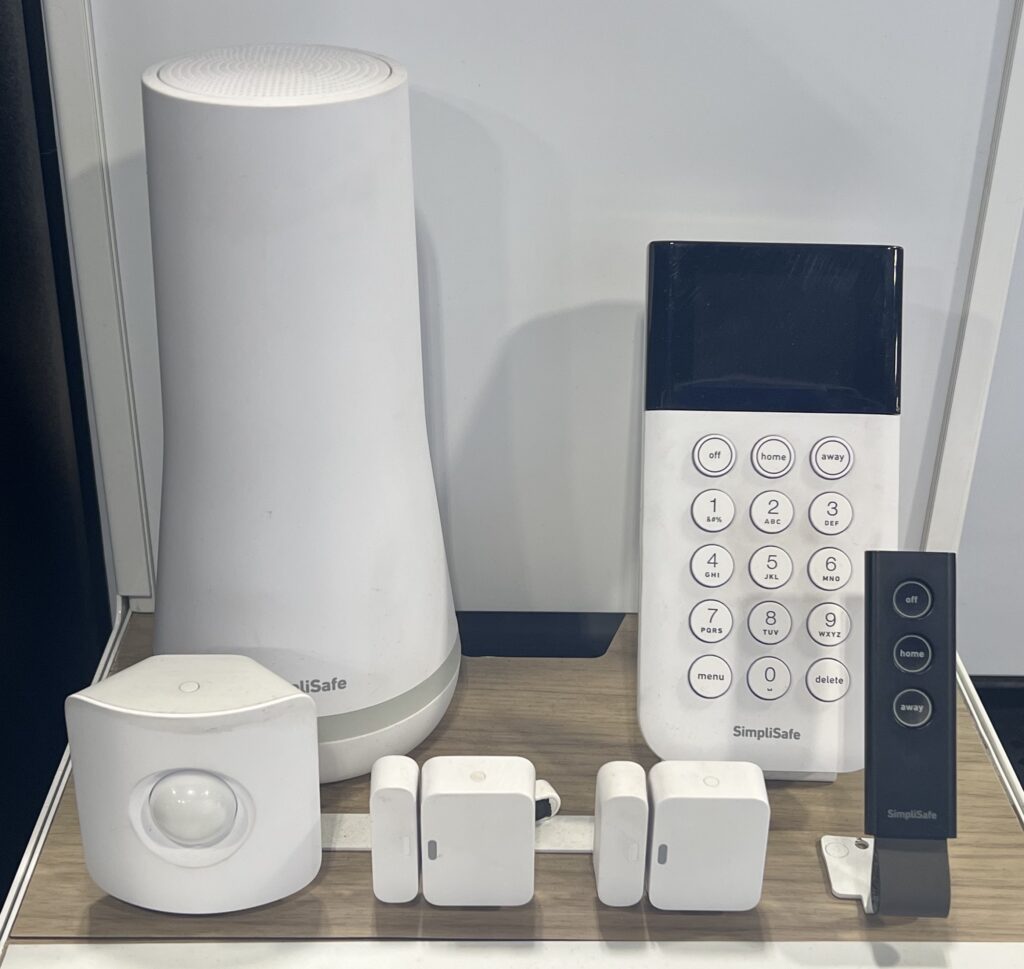
3. **The Cellular Gap: How Systems Without Robust Cellular Backup Plans Leave You Exposed**For home security systems to remain truly functional during a power outage, especially when Wi-Fi is down, a cellular backup is indispensable. Many wireless security providers have developed this solution, allowing their systems to connect to a cellular network if they lose connection to your Wi-Fi router. However, this critical safety feature often comes with a significant caveat: it typically requires a monthly subscription fee.
Let’s be real: it can feel annoying that you have to subscribe to get what many consider a basic safety feature. Brands like Arlo, Ring, and SimpliSafe connect to a cellular network only if you pay for their higher-tiered plans. For example, Ring Protect Pro costs $20 per month, SimpliSafe Standard is $19.99 per month, Abode Pro is $22.99, and Arlo Safe & Secure Pro is $24.99 per month.
Without a cellular backup, if your internet goes out, you’ll still get local alarms sounding inside your house. However, a major component of modern security – communication with monitoring services and push notifications to your mobile device – will be lost. This means that while an intruder might trigger an audible alarm, you won’t receive an immediate alert on your phone, and a professional monitoring center won’t be notified, significantly delaying response times.
On the bright side, these subscription plans often offer more than just cellular failover. The best monitored home security systems, and even our favorite cloud storage security cameras, include 4G backup. That monthly fee often covers not only cell service but also professional monitoring and several gigabytes of cloud storage, adding value beyond just outage protection. Nonetheless, it remains a crucial consideration for budget-conscious consumers seeking continuous protection.
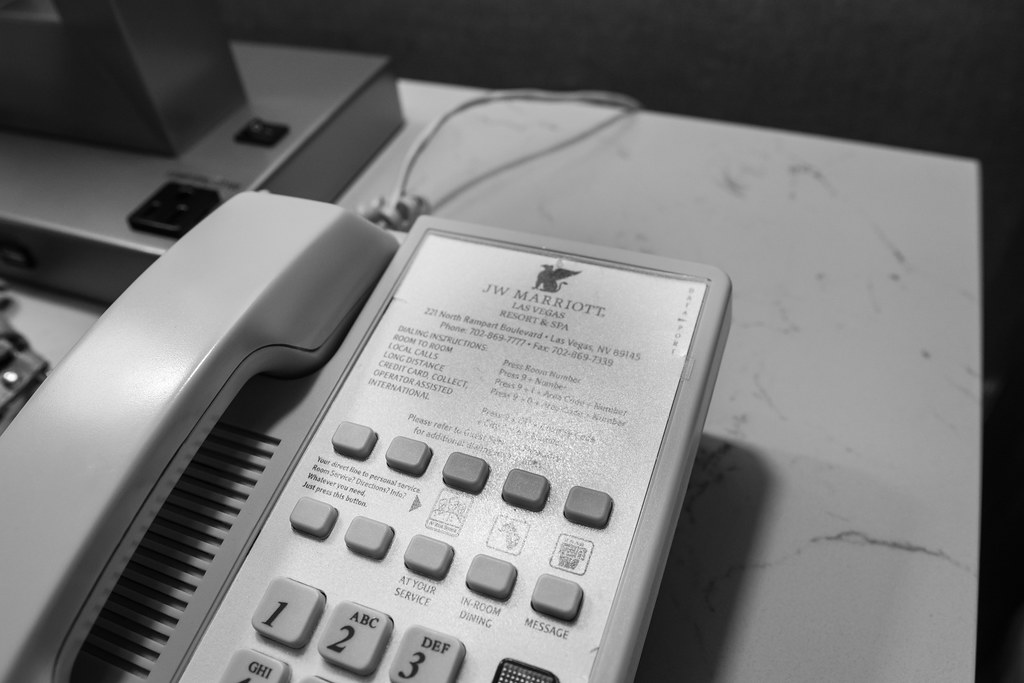
4. **Landlines: An Outdated Lifeline? The Vanishing Option of Traditional Landline Systems and Their Specific Vulnerabilities**
In an era dominated by wireless technology, traditional landline connections for home security systems might seem like a relic of the past. However, these systems have one distinct edge over their fully wireless counterparts during a power outage: they won’t automatically go offline. This is because traditional landlines remain operable even when the lights go out, assuming the storm didn’t take down the physical phone lines themselves.
For the 27% of Americans who still use landlines, connecting their security systems to their phone line can provide a reliable communication path during blackouts. ADT stands out as one of the last major home security companies that still offers this option, as most of its competition has gone fully wireless. A traditional ADT system, for instance, would keep running until its batteries run out of juice, provided the phone lines remain intact.
However, relying on landlines for modern security comes with its own set of significant drawbacks and vulnerabilities. First, landline connections can be cut by burglars. While backup security measures usually alert monitoring services to such outages and internal alarms would still sound, the intentional severing of a communication line is a straightforward tactic for determined intruders.
More broadly, landlines are a technology on the decline. Since the implementation of FCC Order 19-72, phone companies are no longer obligated to provide landline service. Many are actively switching landline customers to more technologically advanced, internet-reliant options, and some traditional home security installation companies are following suit. This means that even if a landline system works well during an outage, it’s not a future-proof solution and may soon become unavailable altogether.
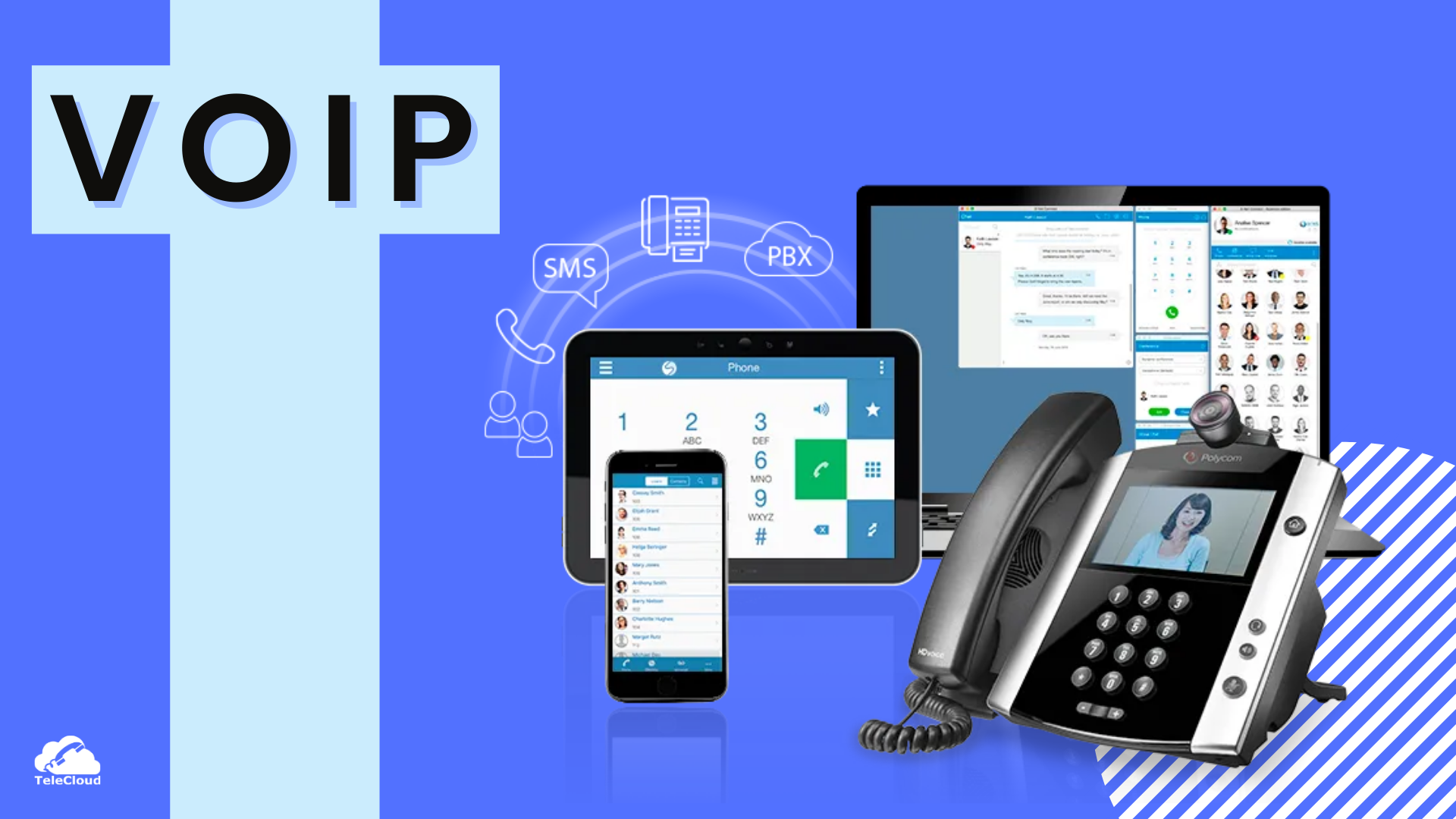
5. **VoIP Vulnerability: Why Voice over Internet Protocol (VoIP) Based Security Systems Are a Non-Starter During Power Loss**
Voice over Internet Protocol (VoIP) technology has revolutionized communication, offering cost-effective phone services and integrated capabilities for many modern systems, including some home security setups. However, just like Wi-Fi-only systems, those that rely on VoIP for their communication present a critical vulnerability during a power outage, rendering them effectively useless.
The fundamental issue with VoIP-dependent security systems is their inherent reliance on an active internet connection. VoIP functions by transmitting voice and data signals over the internet, converting analog audio signals into digital packets. If there’s no power, your internet router won’t work, and subsequently, your internet connection will be down.
This creates a domino effect: no power means no internet, and no internet means your VoIP-based security system cannot function. It won’t be able to communicate with monitoring centers, send alerts to your mobile devices, or even transmit signals between its internal components if their communication pathways are routed through VoIP. Essentially, a power outage would shut down your entire security system’s communication capabilities.
Therefore, if your home security system or its monitoring communication relies on VoIP technology, you face a significant blackout risk. These systems offer little help when the electricity goes out, leaving your home completely disconnected and vulnerable. It’s a crucial factor to consider when evaluating older systems or selecting a new one, ensuring that your communication pathways are diversified beyond internet-dependent protocols.
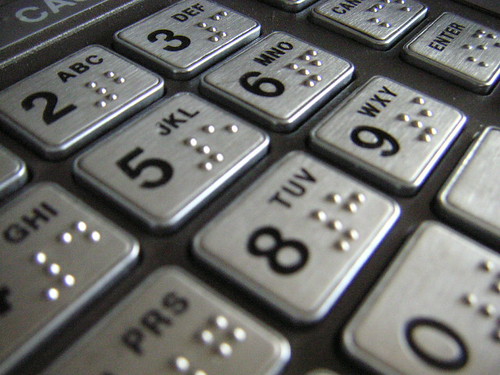
6. **Unprotected Keypads: The Critical Control Panel’s Reliance on Power and Backup During Outages**
The keypad is the central command center of many home security systems, allowing you to arm, disarm, and manage your security settings. It’s the interface through which you interact with your system, and its functionality is paramount. However, when a power outage strikes, this critical component can become another point of failure if not adequately protected.
Most home security keypads are plugged into your home’s electrical system or hardwired directly. This means that when a lightning strike, a coiled snake, or even an intentional power cut severs your access to electricity, your keypad will immediately lose its primary power source. Without power, the keypad becomes inert, preventing you from interacting with your system or receiving direct visual feedback on its status.
While many decent security systems come equipped with backup batteries for their keypads, these are often not long-term solutions. As mentioned earlier, their capacity is limited, with some lasting only four hours and others up to 24. The average power outage can easily exceed this duration, especially if you haven’t recently checked or replaced the keypad’s internal battery. An older, degraded battery may offer significantly less runtime than expected.
Losing access to your keypad during a blackout means losing direct control over your security system precisely when you might need it most. You wouldn’t be able to manually trigger an alarm, check the status of sensors, or disarm the system if the power flickers back on briefly and then goes out again. This highlights the importance of not only having a backup battery for your keypad but also understanding its true operational lifespan and ensuring it’s regularly maintained.
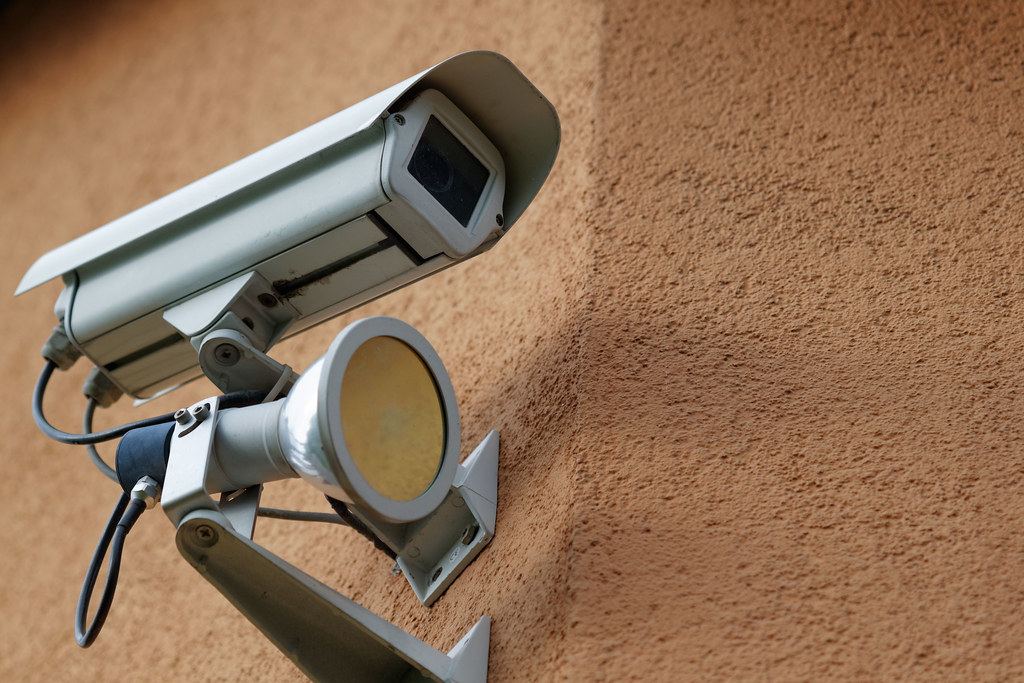
7. **Blind Cameras: How Security Cameras Go Dark Without Independent Power or Backup, Leaving Gaps in Surveillance**
Security cameras are often the frontline defense and primary evidence gatherers in a home security system. They play a crucial role in monitoring suspicious activities, recording footage, and providing real-time surveillance. However, their effectiveness plummets during a power outage, leaving significant blind spots in your home’s protection.
Traditional wired cameras connect directly to your home’s electrical system, either through a power adapter or Power over Ethernet (PoE) cables. These systems, while highly reliable under normal conditions, become immediately vulnerable during power outages. When the electricity goes out, these cameras lose their power supply and cease to function entirely, unable to record any footage or provide live feeds.
Even wireless cameras, which often operate on rechargeable batteries, face challenges. While their internal batteries allow them to continue functioning independently of the grid for a period, their ability to communicate and store footage is severely compromised without Wi-Fi. Many wireless cameras rely on a Wi-Fi connection to send messages, stream video to your mobile device, or upload recordings to cloud storage.
In the event of a power and Wi-Fi outage, a battery-powered camera might continue to “see,” but it may not be able to “tell.” The system can’t transmit signals between devices, meaning you won’t get push notifications, and recorded footage might only be stored locally, if at all. Some systems, like Vivint’s, might even switch off higher-power devices like cameras during an outage to preserve energy for core alarms.
This means that during a blackout, you could have zero proof for situations where you might need it most, such as a piece of debris whipping by and denting your car during an extreme weather event. The impact on security cameras is profound, rendering a vital component of your system ineffective and leaving you without crucial visual monitoring when your home might be most vulnerable.
Navigating the complexities of home security during a power outage requires a clear understanding of potential weak points, as extensively detailed in our previous section. However, identifying vulnerabilities is only half the battle. The true peace of mind comes from implementing robust, reliable solutions that ensure your home remains protected even when the electrical grid falters. Now, we shift our focus to exploring advanced strategies and robust alternatives designed to maintain continuous home security during blackouts, addressing the very challenges we’ve outlined.
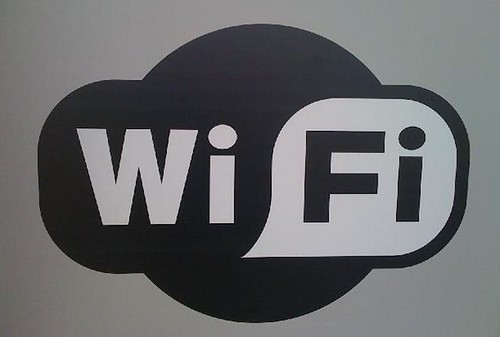
8. **The Indispensable Role of Robust Cellular Failover**In a world where Wi-Fi is often the backbone of smart home devices, the complete shutdown of your wireless network during a power outage creates a critical communication void. As discussed, many systems primarily rely on Wi-Fi to transmit alerts and status updates. This is precisely where robust cellular failover steps in as an indispensable solution, providing an alternative communication pathway when your primary internet connection is offline.
The mechanism is straightforward yet profoundly effective: when your home security system detects a loss of Wi-Fi or internet connectivity, it automatically switches to a cellular network. This means critical alerts, such as an activated alarm or a tripped sensor, can still be sent to your professional monitoring center and push notifications can reach your mobile device. This continuous communication ensures that even if the lights are out, help can still be dispatched, or you remain informed about your home’s status.
While some consumers may balk at the idea of an additional monthly subscription fee for cellular backup, it is vital to view this as an investment in uninterrupted safety. Providers like Ring, SimpliSafe, Abode, and Arlo offer higher-tiered plans that include 4G cellular failover, often bundling it with other valuable services like professional monitoring and cloud storage. For example, Ring Protect Pro costs $20 per month, SimpliSafe Standard is $19.99 per month, Abode Pro is $22.99, and Arlo Safe & Secure Pro is $24.99 per month, offering a comprehensive package of security features.
Understanding that you’re paying for more than just a backup connection can help frame this expenditure. The peace of mind that comes from knowing your system remains online and connected to monitoring services, even during a widespread outage, is invaluable. This feature is particularly crucial given that the average power outage can exceed seven hours, a duration often longer than the lifespan of many device-level backup batteries alone.
Therefore, when evaluating or upgrading your home security system, confirming the inclusion and reliability of a cellular failover option is paramount. Systems that offer this critical feature are inherently more resilient against the unpredictable nature of power disruptions, ensuring that your home’s watchful eyes and ears never truly go offline, even when the power grid does.
9. **Uninterruptible Power Supply (UPS): Your Short-Term Lifeline**For crucial internet-dependent components of your home security system, an Uninterruptible Power Supply (UPS) can serve as an immediate and effective short-term lifeline during power outages. A UPS is essentially a large battery contained within a unit that sits between your electrical outlet and your device. When the main power fails, the UPS instantly switches to battery power, providing continuous electricity without any interruption.
The primary benefit of a UPS for home security lies in its ability to keep your Wi-Fi router, and potentially your modem, operational. As established, many modern security systems, especially DIY wireless setups, rely heavily on your home’s Wi-Fi network for communication. By connecting your router to a UPS, you can maintain your internet connection for several hours, allowing your security cameras to continue streaming, sensors to report, and the system to communicate alerts via Wi-Fi until the UPS battery depletes or power is restored.
UPS units are available at various price points and capacities. You can pick up a cheap, serviceable UPS for about $50, which can provide a few hours of backup power for your router. More robust units will cost more but offer extended runtimes. It is crucial to select a UPS with sufficient capacity for the combined power draw of the devices you intend to connect, ensuring it can adequately support your Wi-Fi network and any other critical security hubs during a blackout.
Beyond just your router, a UPS can also be beneficial for other low-power, critical security components that are plugged into an outlet and lack robust internal battery backups. This might include a smart home hub, a dedicated security system gateway, or a specific control panel. By intelligently distributing UPS protection to your system’s most vulnerable points, you create a robust immediate defense against sudden power loss.
Regular maintenance, including periodic testing of the UPS unit and checking its internal battery health, is vital to ensure its reliability. Much like the internal batteries of your security devices, a neglected UPS battery may not perform as expected when you need it most. Integrating a UPS is a proactive and relatively inexpensive step that significantly enhances your home security system’s resilience against the common occurrence of shorter power outages.
10. **Generators: The Long-Haul Power Solution**When facing extended power outages that stretch beyond a few hours, the limited lifespans of device batteries and UPS units prove insufficient. This is where generators emerge as the ultimate long-haul power solution, offering the capacity to keep your entire home, including your comprehensive security system, fully operational for days rather than mere hours. Investing in a generator provides a robust answer to prolonged blackouts, addressing both comfort and critical security needs.
There are primarily two types of generators suitable for home use: portable and standby (whole-home) generators. Portable generators are more affordable and can power selected essential circuits or devices via extension cords. Standby generators, on the other hand, are permanently installed, connect directly to your home’s electrical system, and automatically activate when a power outage is detected. This seamless transition ensures no interruption to your security system, Wi-Fi, or any other household appliances.
With a generator running, your Wi-Fi router, security system control panel, cameras (both wired and wireless), and all sensors will remain fully powered and connected. This eliminates the blind spots and communication failures that plague unprotected systems during extended outages, allowing for continuous surveillance, alert transmission, and professional monitoring. For homeowners in areas prone to severe weather and prolonged blackouts, a generator offers unmatched security continuity.
While a decent generator will cost about 10 times as much as a basic UPS, the investment yields extensive benefits. Beyond maintaining your security system, a generator keeps your lights on, refrigerator cold, and heating or air conditioning running, significantly enhancing the safety and livability of your home during an emergency. This comprehensive power solution provides peace of mind far beyond mere security, making it a critical asset for resilient living.
However, owning a generator comes with responsibilities, including ensuring a reliable fuel source (natural gas, propane, or gasoline) and adhering to a strict maintenance schedule. Regular servicing and testing are essential to guarantee the generator starts reliably when called upon. For standby units, professional installation is recommended to ensure safety and compliance with local codes. Despite the upfront cost and maintenance, a well-implemented generator system is an unrivaled solution for safeguarding your home and security during extended grid failures.
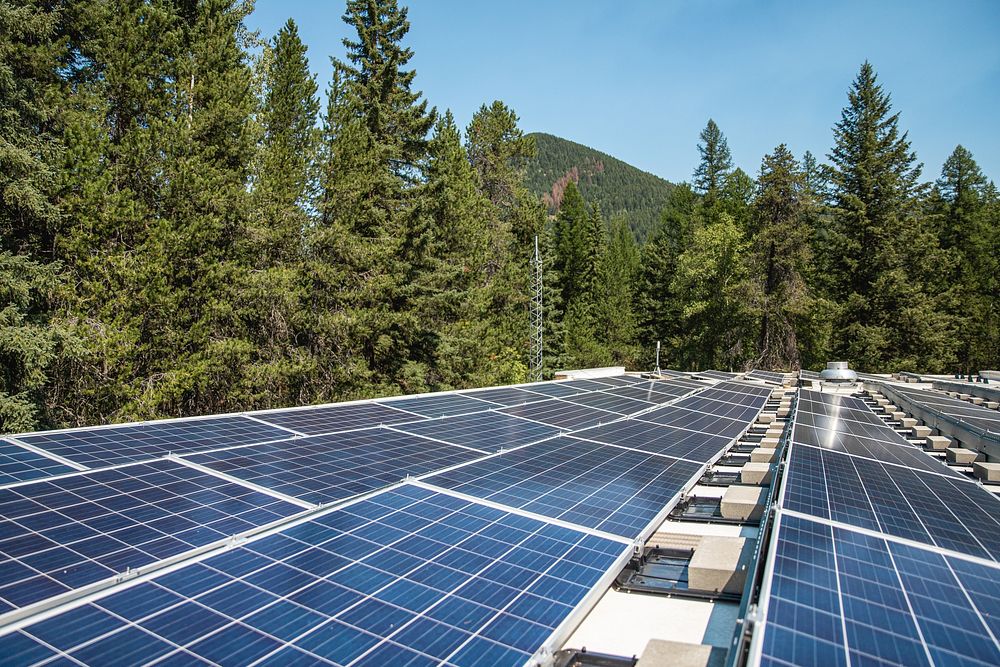
11. **Harnessing the Sun: The Promise of Solar-Powered Systems**For those seeking an eco-friendly and profoundly resilient solution to power outages, harnessing the sun through solar-powered security systems presents a compelling option. Solar power offers genuine self-sufficiency, ensuring continuous operation for critical security components, even during extended grid failures, as long as there’s sufficient daily sunlight. This approach moves beyond temporary backups to a truly independent power source.
A prime example of this innovation is found in solar-powered security cameras, like those developed by Safemo. These cameras ingeniously combine solar charging capabilities with high-capacity internal batteries. This synergy means the cameras continually recharge themselves when exposed to sunlight, allowing them to function at full capacity, including 4K resolution monitoring and smart detection features, throughout prolonged power outages. The key advantage is that they don’t rely on the grid for recharging once the battery is initially full, making them ideal for off-grid resilience.
Beyond individual cameras, the concept extends to broader home security integration. Solar panels can be installed to charge larger battery banks, which then provide backup power for an entire home security system. This setup can keep your main control panel, all sensors, and even your Wi-Fi router (if connected to the solar battery system) operational. This comprehensive solar integration offers a robust layer of protection, particularly valuable in regions with reliable sunshine or as part of a larger renewable energy home setup.
The benefits of solar power for security systems stretch beyond just outage protection. It represents a sustainable solution that reduces your reliance on the conventional electrical grid, potentially lowering your energy bills and minimizing your carbon footprint. Furthermore, in scenarios where intentional power cuts or localized grid failures occur, a solar-powered system remains unaffected, providing an additional layer of defense against sophisticated threats.
However, practical considerations are important. The effectiveness of solar charging depends on adequate sunlight exposure, necessitating careful placement of panels or cameras. The capacity of the associated battery storage must also be sufficient to cover periods of low light or nighttime operation. Assessing your environmental conditions and potentially consulting with solar energy professionals for larger integrated systems will ensure optimal performance and long-term reliability.
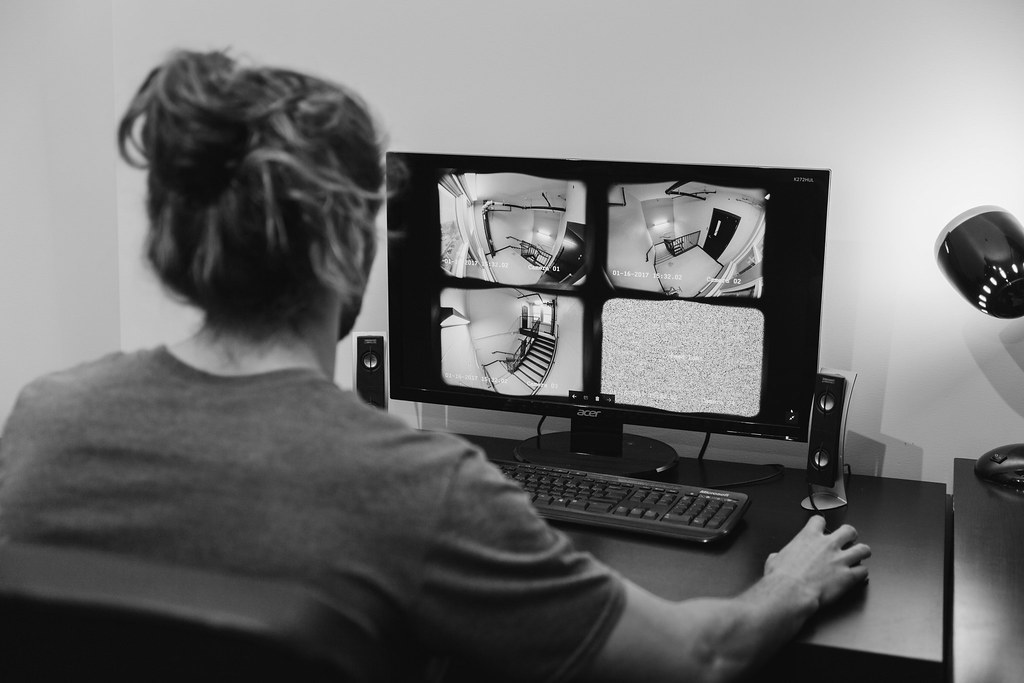
12. **Strategic Hybrid Approaches and Redundancy: The Ultimate Shield**The most effective strategy for ensuring continuous home security during power outages isn’t about choosing a single solution; it’s about intelligently combining multiple layers of protection to create a truly resilient and redundant system. A strategic hybrid approach acknowledges that no single backup method is foolproof and that layering different solutions provides the ultimate shield against the unpredictable nature of blackouts.
Consider the synergistic power of combining a UPS with a cellular-enabled security system. The UPS can keep your Wi-Fi router online for those critical initial hours, allowing your system to function normally. If the outage extends beyond the UPS’s capacity, the cellular failover seamlessly kicks in, maintaining communication with monitoring services. This multi-pronged communication strategy dramatically reduces the window of vulnerability, ensuring alerts are always transmitted.
For longer-term resilience, integrating solar-powered cameras or a broader solar battery backup system provides sustained power independence, especially for surveillance components. This can then be augmented by a whole-home generator, which serves as the ultimate failsafe, capable of powering your entire home, including all security devices, indefinitely during severe and prolonged grid failures. This tiered approach ensures that as one layer of defense is tested, another is ready to take over.
Beyond technical solutions, the human element of professional monitoring remains a critical component of a hybrid strategy. Even with robust backup power and communication, having a dedicated team alerted to anomalies ensures a prompt response, especially if you are away or unable to act. This integrated service adds a vital layer of proactive intervention, transforming raw data into actionable security.
Ultimately, continuous security during power outages stems from proactive planning and informed choices. Regularly testing your backup batteries (ideally every two to three years), verifying your cellular plan’s functionality, and understanding the specific power dependencies of each component in your system are non-negotiable. Don’t wait until the next storm hits; assess your vulnerabilities, explore these robust alternatives, and implement a strategic hybrid solution to ensure your home remains an impenetrable sanctuary, come what may.
The path to truly resilient home security during power outages is paved with informed decisions and strategic investments. By understanding the vulnerabilities and embracing robust solutions – from indispensable cellular failover and short-term UPS devices to long-haul generators, self-sufficient solar power, and innovative portable systems – homeowners can build a multi-layered defense. The ultimate goal is uninterrupted protection, ensuring that your home remains secure and your family safe, regardless of what challenges the power grid might face. Don’t let the dark leave you vulnerable; empower your home security system to stand strong against any blackout.


